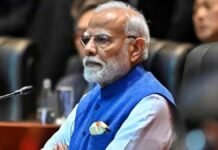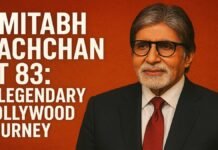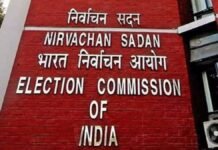
Key Points
- Sanjay Raut says MNS and Shiv Sena (UBT) will fight civic polls together; focus on uniting Marathi voters.
- Alliance to span BMC, Thane, Kalyan-Dombivli, and Nashik; not limited to Mumbai alone.
- BJP minister Girish Mahajan dismisses the claim; says Raut’s statement shouldn’t be taken seriously.
- Raut targets Mahayuti (BJP–Shinde Sena–Ajit Pawar NCP), claims “Thackeray brothers’ unity” will prevail.
- Past civic strength: Sena dominant in BMC/Thane; MNS holds pockets in Kalyan-Dombivli and Nashik.
Mumbai: A (UBT) MP Sanjay Raut has declared that Raj Thackeray’s MNS and Uddhav Thackeray’s Shiv Sena (UBT) will contest the upcoming local body elections in Maharashtra together, describing it as an effort to consolidate Marathi voters across key urban bodies. The statement was made on August 15 and positions the alliance as a broader front, not confined to Mumbai’s BMC.
Where Will They Contest Together?
Raut said the alliance will extend beyond the Brihanmumbai Municipal Corporation to include:
- Thane Municipal Corporation
- Kalyan-Dombivli Municipal Corporation (KDMC)
- Nashik Municipal Corporation
Framing it as a cultural-political consolidation, Raut argued that the combined strength of the Thackeray brothers symbolizes Marathi unity, and asserted confidence in a strong showing in the BMC.
Political Fireworks: Mahayuti In The Crosshairs
Raut used the announcement to attack Maharashtra’s ruling Mahayuti BJP, Eknath Shinde’s Shiv Sena, and Ajit Pawar’s NCP alleging their “evil forces” cannot break Marathi unity. The rhetoric signals an aggressive campaign line that casts the alliance as the authentic Marathi voice against the ruling combine.
BJP Pushback: “Don’t Take Raut Seriously”
BJP leader and minister Girish Mahajan dismissed Raut’s claim, saying it should not be taken seriously. In political circles, there’s also a view that even if the alliance firms up, its success will hinge on two factors:
- Whether Marathi votes consolidate behind the Thackeray brothers.
- How effectively the BJP–Shinde–Ajit Pawar coalition mobilizes its machinery and narrative.
Ground Math: Past Civic Strength At A Glance
- BMC (227 seats): Shiv Sena has historically been the largest force, with 90 corporators in the previous house; MNS held 1.
- Thane (131 seats): Shiv Sena commanded 67; MNS had none.
- Kalyan-Dombivli (122 seats): Shiv Sena had 52; MNS 9 one of MNS’s stronger pockets.
- Nashik (122 seats): Shiv Sena had 35; MNS 5 another area of MNS influence.
These numbers underscore Sena’s entrenched urban base and MNS’s localized strength particularly relevant to ward-level negotiations and seat-sharing.
What To Watch Next
- Formal seat-sharing announcement: ward-wise distribution in BMC, Thane, KDMC, Nashik.
- Candidate selection and campaign themes: Marathi asmita vs. governance-delivery narrative of Mahayuti.
- Response from Raj Thackeray and Uddhav Thackeray: joint rally, joint statement, or a working committee outline.
- Mahayuti’s counter-strategy: coalition cohesion, candidate consolidation, and outreach to undecided urban voters.





















































